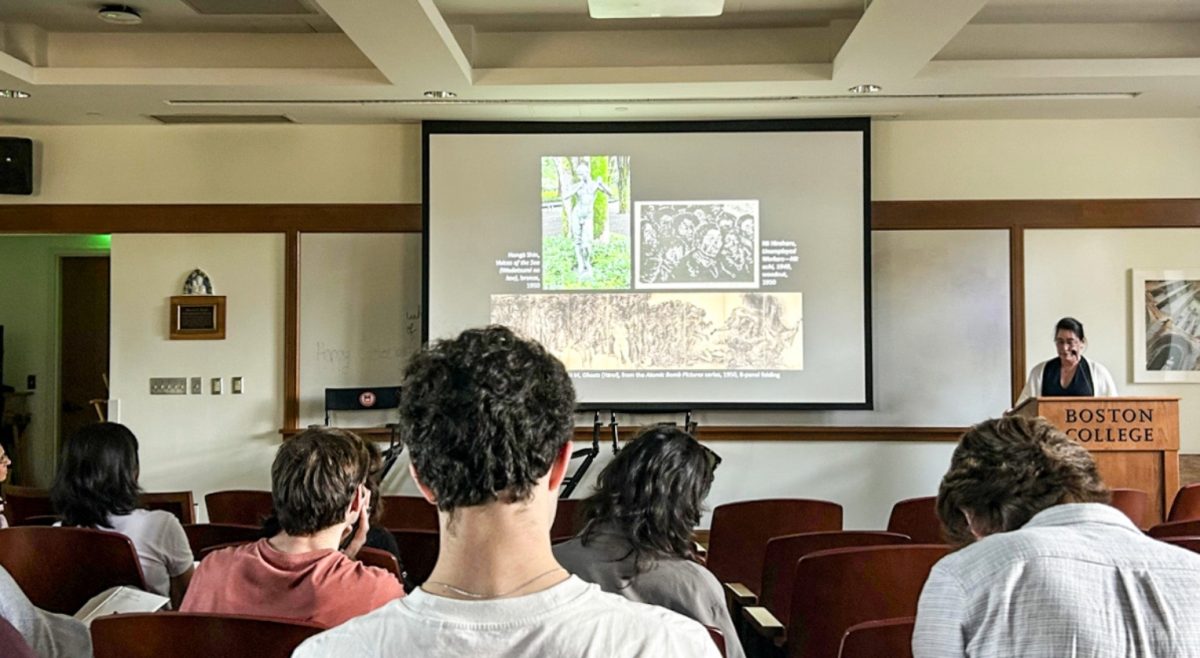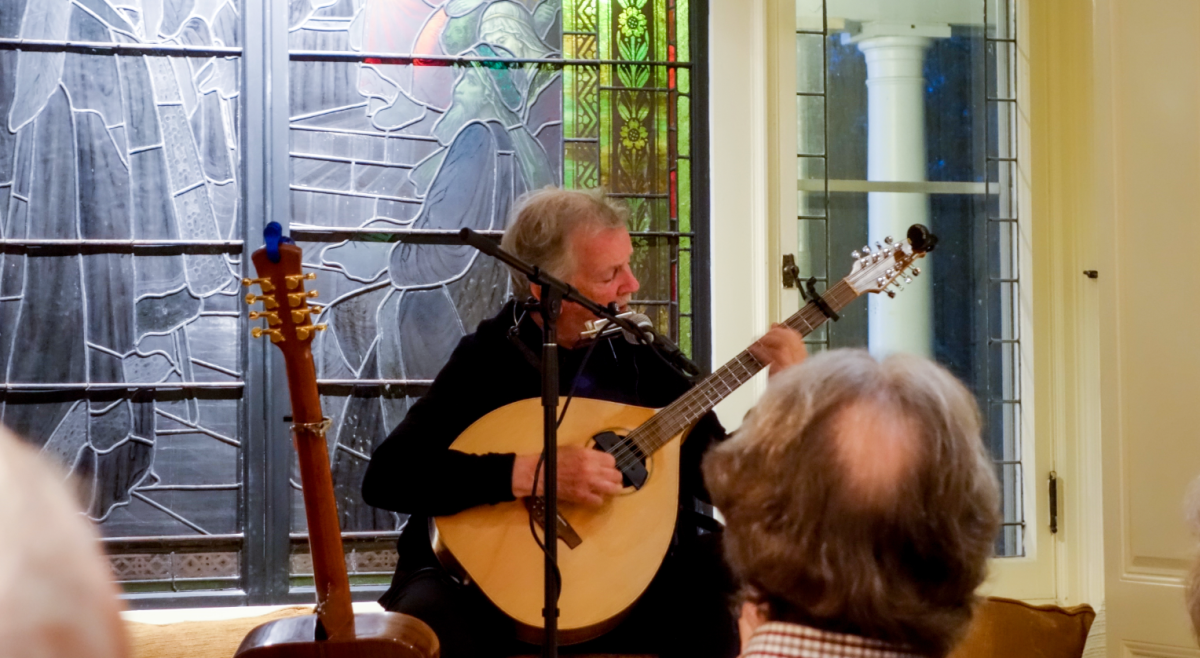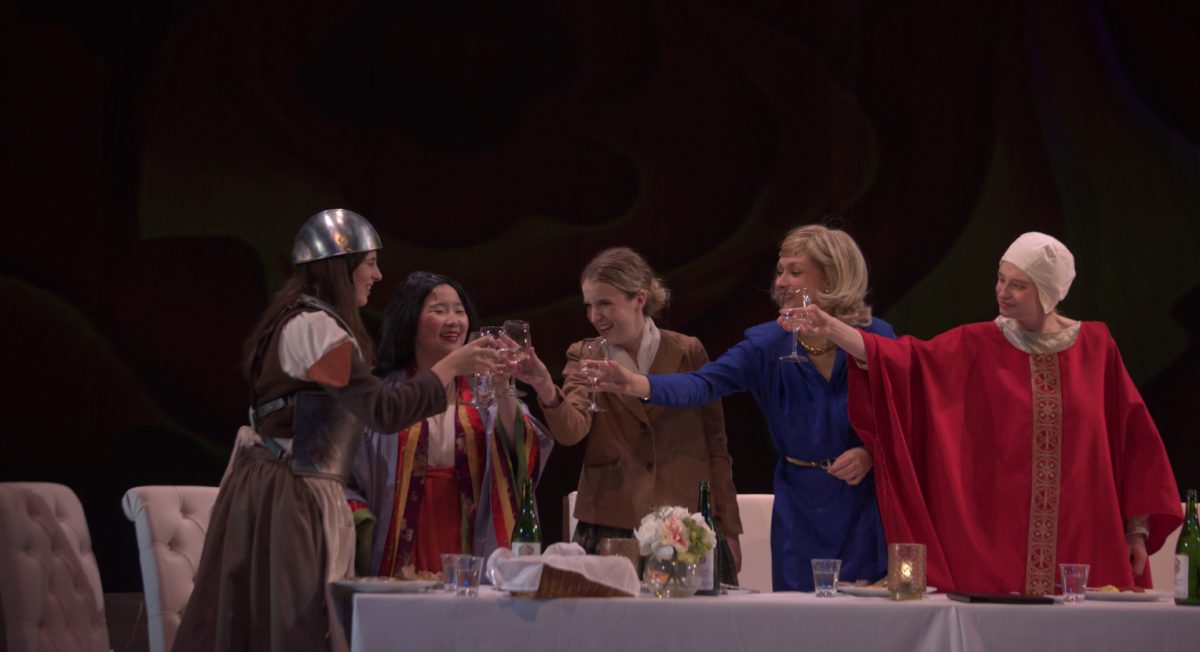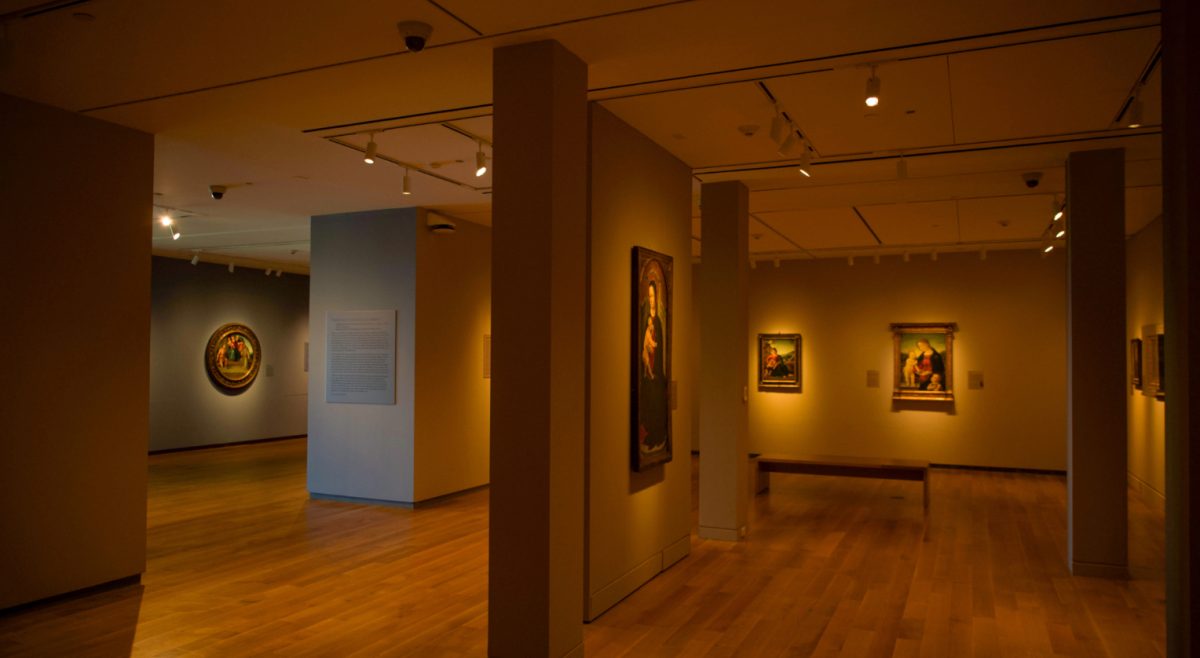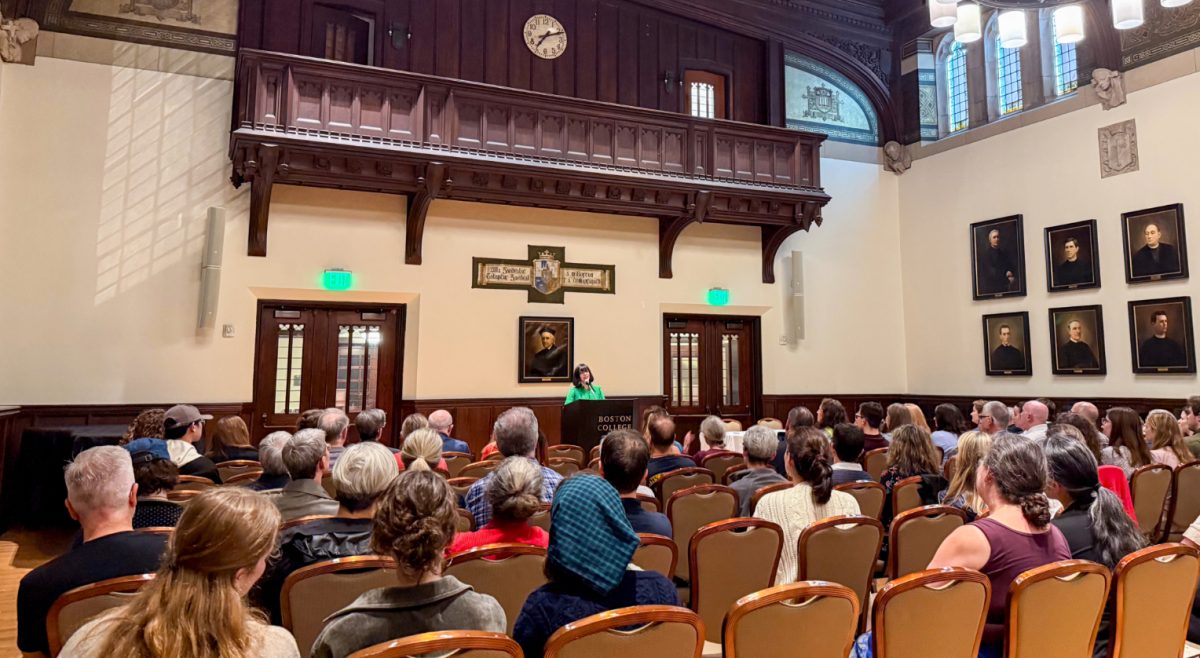Postwar Japanese art has been largely misunderstood and selectively interpreted, according to Alicia Volk, professor of Japanese Art at the University of Maryland.
Monday’s lecture, titled “Art in the Shadow of Empire: Art in Occupied Japan,” challenged the overarching assumption that Japanese art developed in isolation, in a vacuum. Instead, Volk framed it as deeply intertwined with the structures of empire in both Japan’s own imperial past and the emerging American empire that dominated the postwar world.
“To look at most histories of postwar Japanese art, both in the U.S. and in Japan, is to miss the Japanese art made under the conditions of American occupation altogether,” said Volk.
Volk began by exposing what she described as a fundamental contradiction in Japanese art history. The very period in which Japan underwent massive political and social transformation remains unacknowledged in the historical record.
The idea of a historical “void,” she argues, was not the result of an actual absence of artistic creation but rather a selective vision—an active decision about which kinds of art counted as modern or significant and which didn’t.
“In the post-World War II era of American global dominance, it has been the art of the victor, not of the vanquished, that has formed the backbone of what is referred to as postwar art,” said Volk.
According to Volk, this selective storytelling has produced a distorted understanding of artistic modernity. The historical narrative celebrates the triumph of American innovation while rendering the creative responses of nations living under occupation invisible.
It reflects a deliberate overlooking of any artistic production that does not fit neatly within the dominant narratives of art history shaped by geopolitical power. Volk highlighted this distortion as a kind of double amnesia.
“Memories of Japan’s imperial ambitions in Asia have been repressed, while the imperial basis of its postwar alliance with the U.S. has remained obscure,” said Volk.
The selective memory of both Japan’s imperial past and America’s imperial present has shaped how art from the period is understood, or, more often, not perceived at all. Volk challenged the conventional division between prewar, wartime, and postwar art, arguing that rigid periodisations obscure the truth of the artistic and ideological struggles that persisted through these eras.
“What can we see when we adopt a perspective that begins not with a U.S. imperial gaze or later Cold War gaze, but instead the point of view of the occupied?” said Volk.
By inviting her audience to view art from the perspective of those living under occupation, Volk posed an important set of questions: What were they experiencing? What were they thinking? How did they express the contradictions of their world through art?
Volk discussed a set of decorative screens commissioned by a U.S. general during the occupation. The artwork displays an idyllic world where U.S. and Japanese cultures blend harmoniously. Volk noted, however, that the artwork leaves out the harsh realities of the time. Issues such as homelessness, political protests, and the presence of U.S. military forces in the streets are absent.
“Such pictures embody the gaze of the warlord,” Volk said. “Its lavish material seduces us into perceiving its world as one of plenty rather than of deprivation. Its bands of gold clouds selectively reveal and conceal.”
In the latter part of the lecture, Volk highlighted the vital role of archival research in recovering these suppressed narratives. It is clear archives are not just about recovering forgotten names, but also exposing gateways into obscured worldviews and understanding how artists under occupation imagined their realities and futures.
“Embracing the archives brings to life those voices that, with the passage of time and the writing of history, have been silenced,” Volk said.
Volk closed out her lecture with a powerful conclusion, reminding us that art, when viewed from new perspectives, can reveal unexpected connections across the world and across empires.
“When we look elsewhere and think otherwise, we may in fact find that worlds we think of as separate once engaged in surprising ways,” said Volk.
Her lecture left the audience with a clear challenge: We must try to look beyond the established canon and question the narratives of empire that shape art history. This will allow us to recognise the creativity that flourished under occupation.
Volk’s lecture reframed the story of how postwar Japanese art can be viewed. By uncovering silenced voices and by urging us to view art through the lens of the occupied, she revealed how creative expression persisted under conditions of domination.

